TL;DR
Turn a tiny room into a restorative retreat with practical, beautiful small bedroom ideas that save space without skimping on style. Expect clever storage, lighting, and color moves you can copy this weekend, plus a small bedroom makeover before and after mindset you can apply to any layout.
Why small bedrooms are the new design frontier
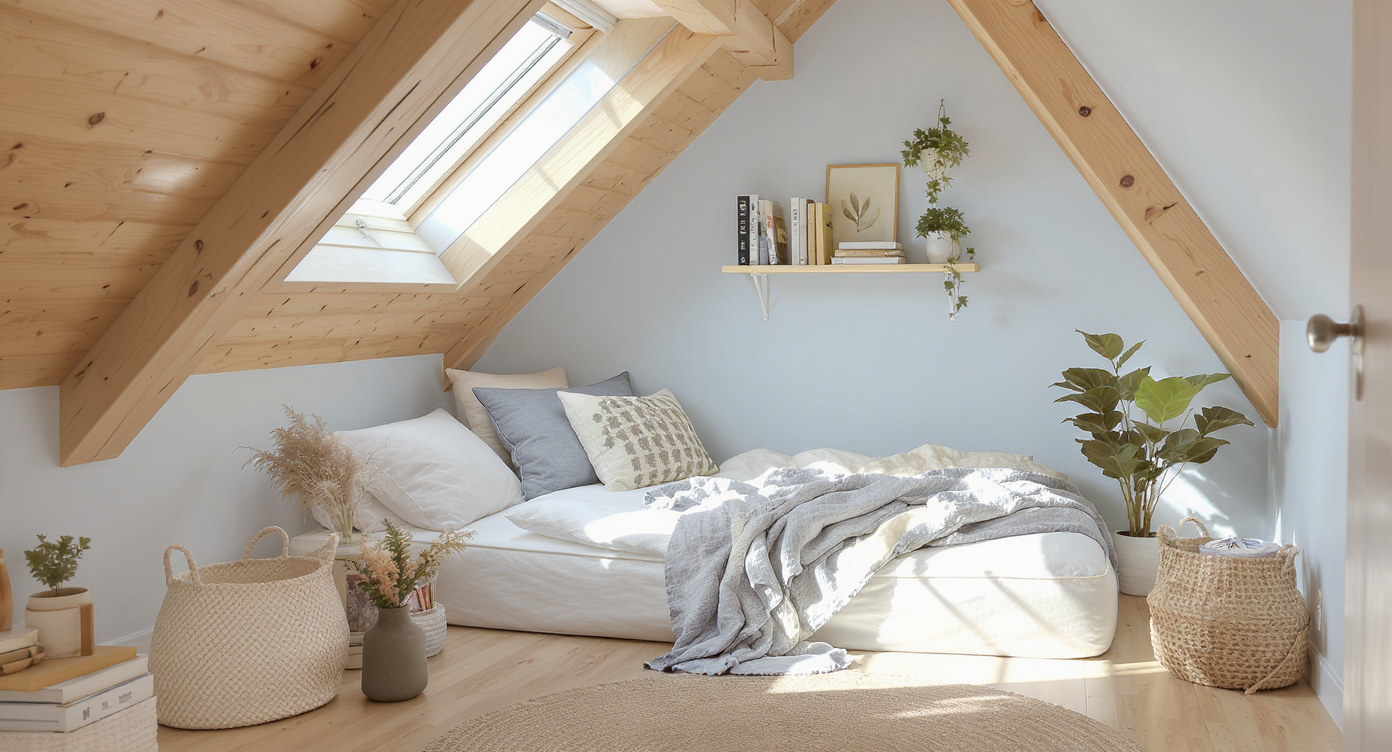
DIY-inspired attic nook with warm wood and calming colors creates a personal retreat.
Here’s the thing: in 2025, small bedroom design isn’t a compromise — it’s a craft. Budget pressures, sustainability goals, and the desire for deeply personal spaces are nudging more of us toward DIY home décor and budget decorating ideas. The payoff? Rooms that feel intentional, layered, and uniquely ours.
I’ve seen hexagonal turrets turned into tranquil sleeping nooks, and attic slants become dreamy dens with nothing more than a bed built into the eaves and a wash of color. When you embrace small-space hacks as participation — not perfection — you create a room that holds you, not just your stuff. Below, you’ll find space-saving design and storage ideas for small, cozy bedrooms that deliver a big visual return.
A shared philosophy for small-space calm
Designers often advise that small-space success starts with restraint, rhythm, and repeatable moves. In practice, that means leaning on DIY home décor, small-space hacks, and lighting that frees up surfaces, then layering storage in ways that disappear. Think color-drenched envelopes, floating nightstands, and wardrobes that stretch to the ceiling.
As a rule of thumb, keep circulation paths at 24–30 inches, choose multi-tasking pieces, and repeat materials to calm the eye. These living room–level strategies translate beautifully to the bedroom — only here, comfort leads.
Anecdote
In a 10×11-foot condo, swapping bulky bedside units for 7-inch-deep floating shelves and plug-in sconces instantly opened the bed wall; the room felt a foot wider without moving a single stud.
DIY hacks & tricks that actually work
01. The Built‑In Bed Nook (box bed)
What it is: A bed framed by shallow joinery that turns dead corners or sloped ceilings into storage-rich cocoons.How it works: Building a bed into an alcove or eaves adds drawers below and shelves above while freeing floor space. Experts recommend at least 24 inches of side clearance on one side and 36 inches of head clearance beneath slopes for comfy sitting. In one attic project, a family tucked twin beds into knee walls so the center stayed open for play; at night it felt like a ship’s cabin, quiet and grounded.
How to try it:
- Sketch a 75–80-inch mattress envelope, then add 12–15-inch-deep upper shelves.
- Use beadboard or tongue-and-groove to add warmth and durability.
Suggested alt text/caption: Built-in box bed with under-bed drawers and shelf niche in a small bedroom.
02. Color‑Drenching for Calm
What it is: Painting walls, trim, and ceiling in one hue to erase visual breaks and make a small room feel seamless.How it works: A single color reduces contrast lines that can make compact rooms feel busy. Designers often advise mid-tone shades with an LRV around 30–50 for a cocooning effect. Prefer contrast? Try the two-tone wall trick with a 60/40 split — darker on the lower two-thirds to “lift” the ceiling. I once watched a low-ceilinged room exhale the minute the ceiling matched the walls in a soft mineral blue.
How to try it:
- Finish in matte on walls and flat on ceilings for a velvety, light-softening look.
- Repeat the color on a lamp or bed valance to reinforce the palette.
Suggested alt text/caption: Color-drenched small bedroom in one paint shade to expand space visually.
03. Wall Lights + Floating Nightstands
What it is: Surface-saving lighting paired with compact shelves that keep floors clear and rooms airy.How it works: Hardwired or plug-in sconces free up 16–20 inches of tabletop you’d lose to lamps. Mount centers at 50–60 inches from the floor or 6–10 inches above your pillow top; add dimmers for wind-down. In my 10×11-foot condo bedroom, narrowing bulky closets made space for 7-inch-deep floating shelves and slim sconces; the bed finally had “breathing room.”
How to try it:
- Size shelves 6–8 inches deep and 18–24 inches wide to hold a book, glasses, and water.
- Hide cords in paintable covers; match wall color to make them disappear.
Suggested alt text/caption: Small bedroom with wall sconces and floating bedside shelves to save space.
04. Ceiling‑High Wardrobes with Bedside Niches
What it is: Built-ins that climb to the ceiling, with recessed cubbies acting as “built-in nightstands.”How it works: Taking wardrobes full height increases storage by 20–30 percent in most rooms. Experts recommend 24-inch depth for hanging storage and 12–15 inches for upper cupboards; leave 1–2 inches at the top for scribing tight to ceilings. Flanking the bed with wardrobes and carving niches into the sides eliminates the need for freestanding tables and shortens your morning reach.
How to try it:
- Paint cabinets the same color as walls to visually sink the mass.
- Add a 2–3-inch lip in niches to keep phones and glasses from sliding.
Suggested alt text/caption: Floor-to-ceiling wardrobes with integrated bedside niches in a compact bedroom.
05. The Right‑Size Rug Rule
What it is: Using an appropriately scaled rug to anchor the bed and add softness without crowding.How it works: A rug should extend 18–24 inches beyond the sides and foot of the bed. For a queen, 8×10 feet is ideal; for a full, 6×9 can work; a 5×8 turned horizontally catches your feet but won’t frame nightstands. I’ve seen a vintage-look flatweave add instant warmth to a bare room — suddenly the whole palette made sense.
How to try it:
- Choose low pile in tight rooms so doors clear and vacuums glide.
- Echo rug accents in a throw or art to knit the scheme together.
Suggested alt text/caption: Proper rug sizing under a queen bed in a small bedroom for visual balance.
06. Mirror Magic (without the funhouse)
What it is: Strategic mirror placement to bounce daylight and create depth without visual clutter.How it works: Place a mirror opposite or adjacent to a window to double the light path; center art and mirrors at 57 inches on center for comfortable viewing. Above a dresser, leave 6–8 inches of wall showing. In one compact city flat, a simple interior window between kitchen and bedroom brightened the latter by a full stop — proof that borrowed light beats brighter bulbs.
How to try it:
- Use one large mirror rather than many small ones to avoid visual noise.
- Round or pill shapes soften tight corners and narrow rooms.
Suggested alt text/caption: Large mirror placed opposite a window to brighten a small bedroom.
The thread that ties these ideas together
What ties these ideas together isn’t just saving space — it’s saving headspace. Repetition of color, materials, and lines turns resourcefulness into a serene rhythm, and every small decision adds up.
I’ve seen it happen over and over: edit the furniture, lift lighting off the surfaces, and stretch storage upward. The room exhales. Imperfections stay, but now they read as charm.
Visualize before you DIY
Before you pick up a brush or order a wardrobe, preview your plan digitally. Platforms like ReimagineHome let you test colors, rug sizes, lighting, and even built-in concepts on a photo of your actual room in seconds.
Upload your bedroom, try a color-drenched scheme, drop in wall sconces and a box-bed mockup, and compare versions side by side. Seeing options reduces guesswork and returns you to the fun part: styling the space you actually live in.
Visualization Scenario
Upload a photo of your small bedroom to ReimagineHome, apply a color-drenched palette, test an 8×10 rug versus 6×9, and place sconces at 56 inches — then compare versions before you buy.
FAQ
How can I decorate a small bedroom on a small budget?
Start with paint, lighting, and textiles before replacing furniture. A color-drenched scheme, wall sconces, and the right-size rug offer maximum impact for minimal cost.What’s the best bed for a small bedroom?
Opt for a platform or built-in bed with storage and leave at least 24 inches of side clearance. Box beds under eaves maximize floor area and feel cozy.How big should a rug be under a queen bed in a small room?
An 8×10 rug is ideal to extend 18–24 inches beyond the bed; a 6×9 can work tightly, or use a 5×8 horizontally to catch your feet.Where should wall sconces go above a headboard?
Mount centers 50–60 inches from the floor or 6–10 inches above pillow height, and place them 8–12 inches from the bed edge for balanced light.How do I make a small bedroom look bigger with paint?
Use a single color on walls, trim, and ceiling to erase contrast lines, or try a 60/40 two-tone wall with the darker shade below to boost perceived height.
Live beautifully in less space
Small bedrooms reward intention. A few high-impact moves — a built-in nook, color-drenched envelope, surface-saving lights — can turn a tight footprint into a deeply restful retreat. Designers often note that the best rooms stick to a few repeated gestures and give the eye a calm place to land. Follow the rules of thumb, trust your instincts, and personalize along the way.
When you’re ready to explore, map ideas first in ReimagineHome. It’s an easy bridge from inspiration to action — and a reminder that the best design story in 2025 is the one you make at home.
.svg)

.svg)

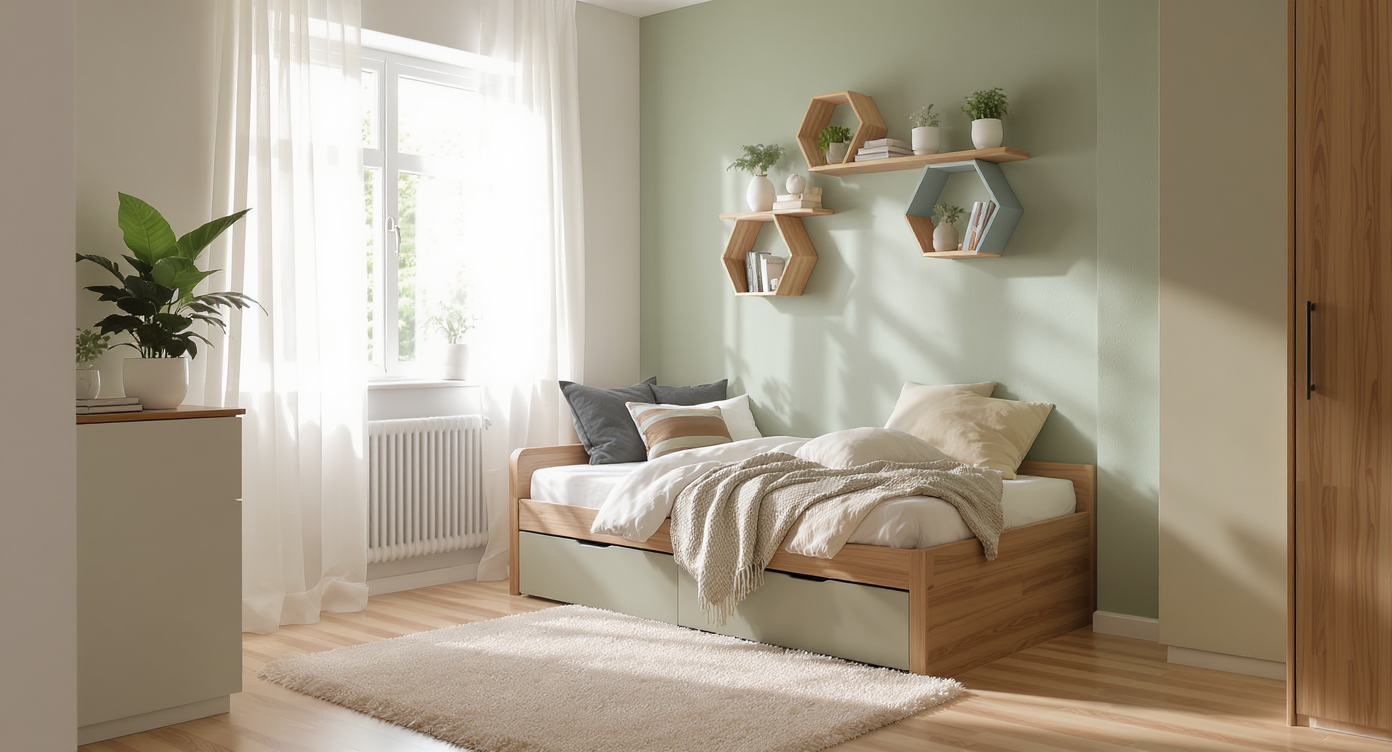
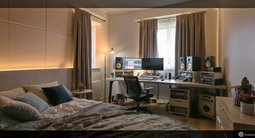
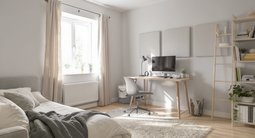
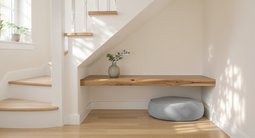

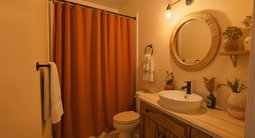


.png)